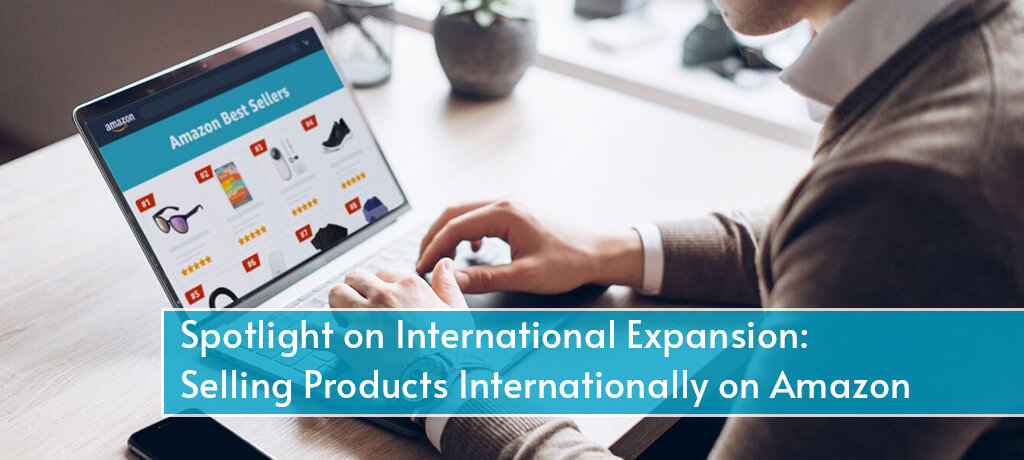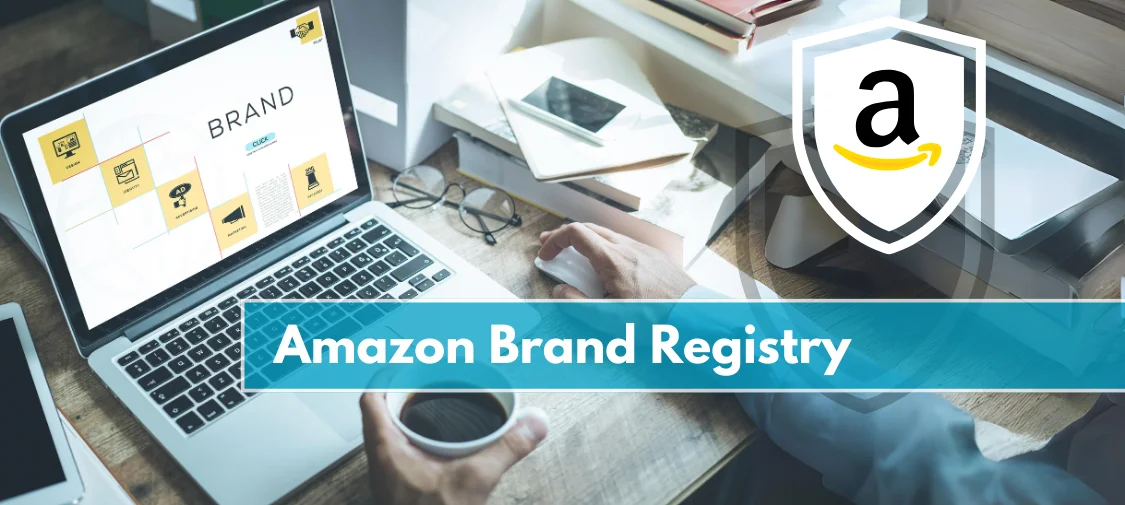Amazon
Spotlight on International Expansion: Selling Products Internationally on Amazon
In the dynamic world of e-commerce, international expansion offers an exciting opportunity for brands to expand their business to generate new revenue streams and reach a global customer base. Amazon, with its vast network and global presence, serves as an ideal ecommerce platform for brands looking to venture beyond their domestic markets.
Further down we explore the opportunities and challenges of selling products internationally on Amazon and provide practical tips for brands aiming to expand their global reach.
What Is Amazon Global Selling?
Amazon Global Selling (AGS) is a program designed to enable sellers to list and sell their products on Amazon’s international marketplaces.
Currently, Amazon operates 13 online marketplaces worldwide, allowing sellers to expand their business globally, regardless of their physical location.
Here is the list of Amazon marketplaces:
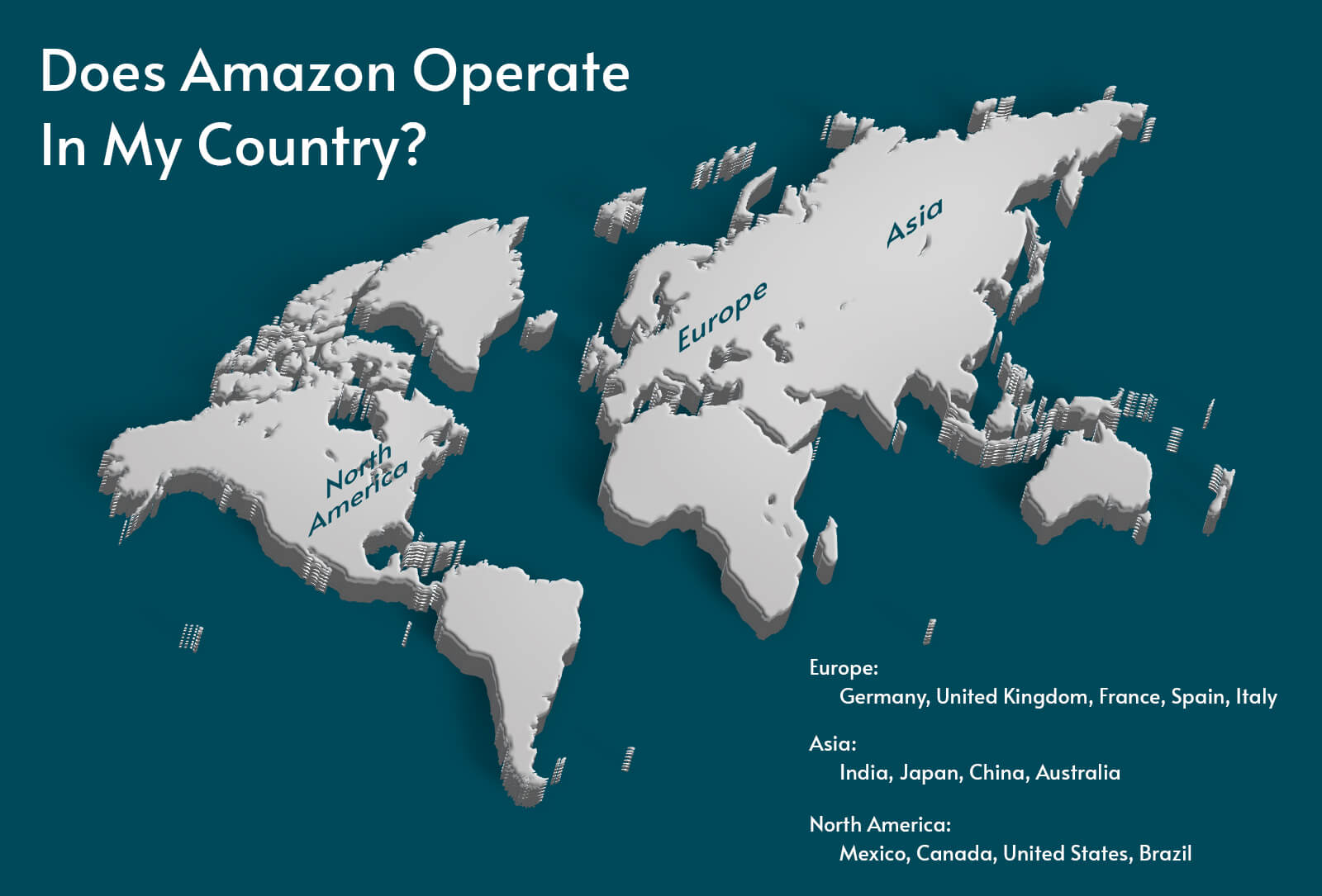
Europe:
- Amazon.de – Germany
- Amazon.co.uk – United Kingdom
- Amazon.fr – France
- Amazon.es – Spain
- Amazon.it – Italy
Asia:
- Amazon.in – India
- Amazon.co.jp – Japan
- Amazon.cn – China
- Amazon.com.au – Australia
North America:
- Amazon.com.mx – Mexico
- Amazon.ca – Canada
- Amazon.com – United States
- Amazon.com.br – Brazil
To sell on Amazon’s marketplaces, you need an individual seller account for each country. If you’re new to Amazon, or aspiring to become an Amazon seller, read our Comprehensive Guide to Different Types Of Seller On Amazon to help you decide better which account is best for your ecommerce goals.
However, there are Unified Accounts that provide exceptions for:
- Europe (UK, France, Germany, Spain, and Italy)
- North America (Canada, Mexico, and the U.S.)
Once you sign up for any one of these Unified Account marketplaces, you automatically gain access to the other countries included in that Unified Account.
Evaluating Amazon’s Opportunities for Established Brands Seeking Global Expansion
As established brands look to broaden their horizons, Amazon presents a lucrative platform for global growth. Here we analyze the strengths and potential of leveraging Amazon for expanding market reach and increasing sales.
Consistent Brand Value Growth:
- From 2007 to 2022, Amazon’s brand value increased almost 120-fold, highlighting its strong market presence and brand recognition. Despite a decline in 2023, the brand’s value remains substantial, indicating continued trust and recognition globally.

Source: Statista
Strong Market Presence in Leading Markets:
- The US remains the largest market with consistent growth in net sales from $60.9 billion in 2014 to $382.2 billion in 2023.
- Germany, the UK, and Japan also show significant growth, with Germany’s net sales increasing from $11.9 billion in 2014 to $39.8 billion in 2023, the UK’s from $8.3 billion to $36.5 billion, and Japan’s from $7.9 billion to $32.5 billion in the same period.
- The “Rest of the World” category also indicates a broadening global reach, with net sales growing from $30.4 billion to $167.8 billion.
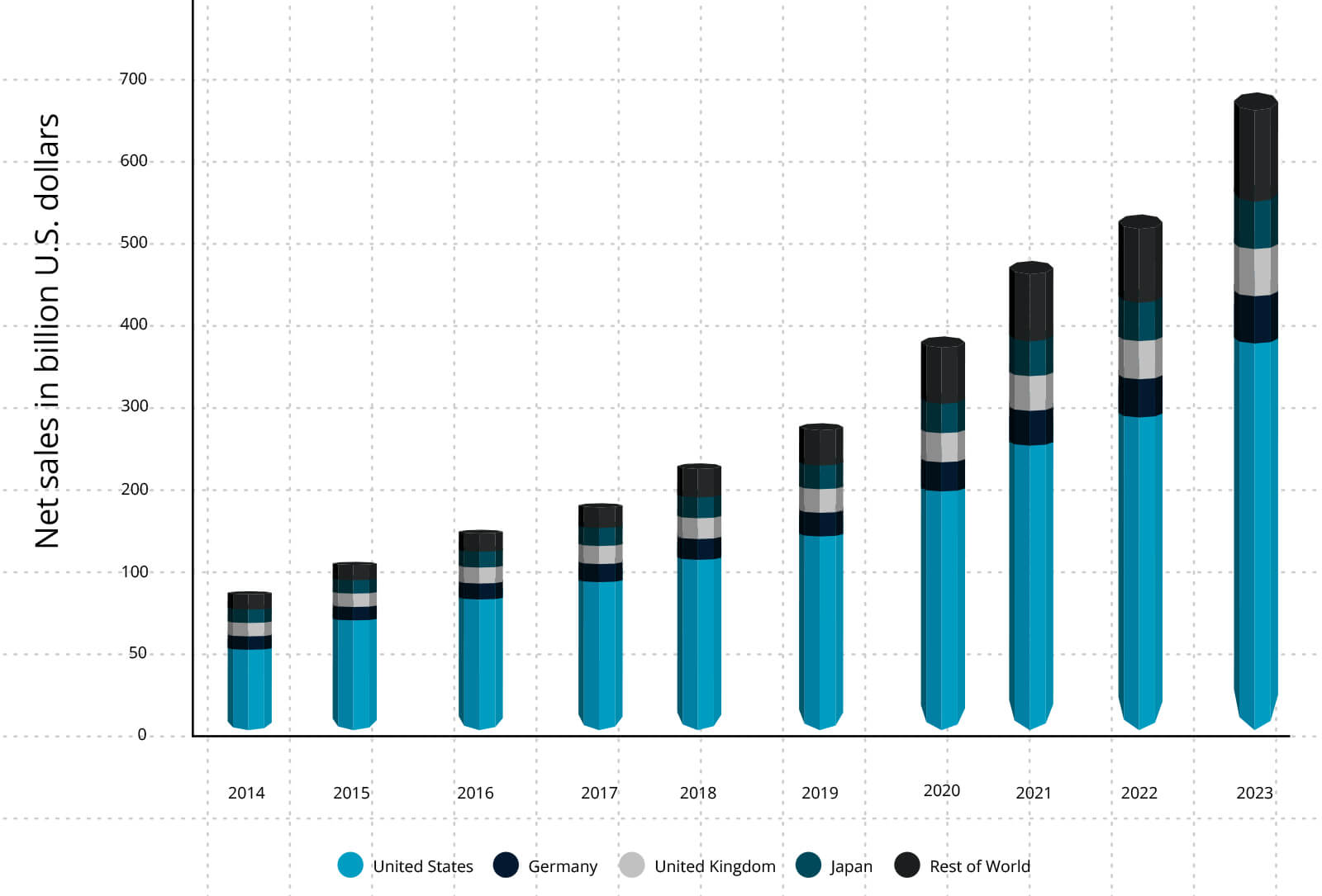
Source: Statista
Third-Party Services as a Major Revenue Segment:
- Third-party services have become a significant revenue stream, emphasizing the importance of independent sellers on the platform. In 2023, third-party services generated $135.61 billion, reflecting a robust infrastructure for brands to leverage.
Global Fulfillment Network:
- Amazon’s extensive fulfillment network, including Fulfillment by Amazon (FBA), provides efficient logistics and delivery services, making it easier for brands to reach global customers.
4 Steps to Successfully Sell Internationally on Amazon
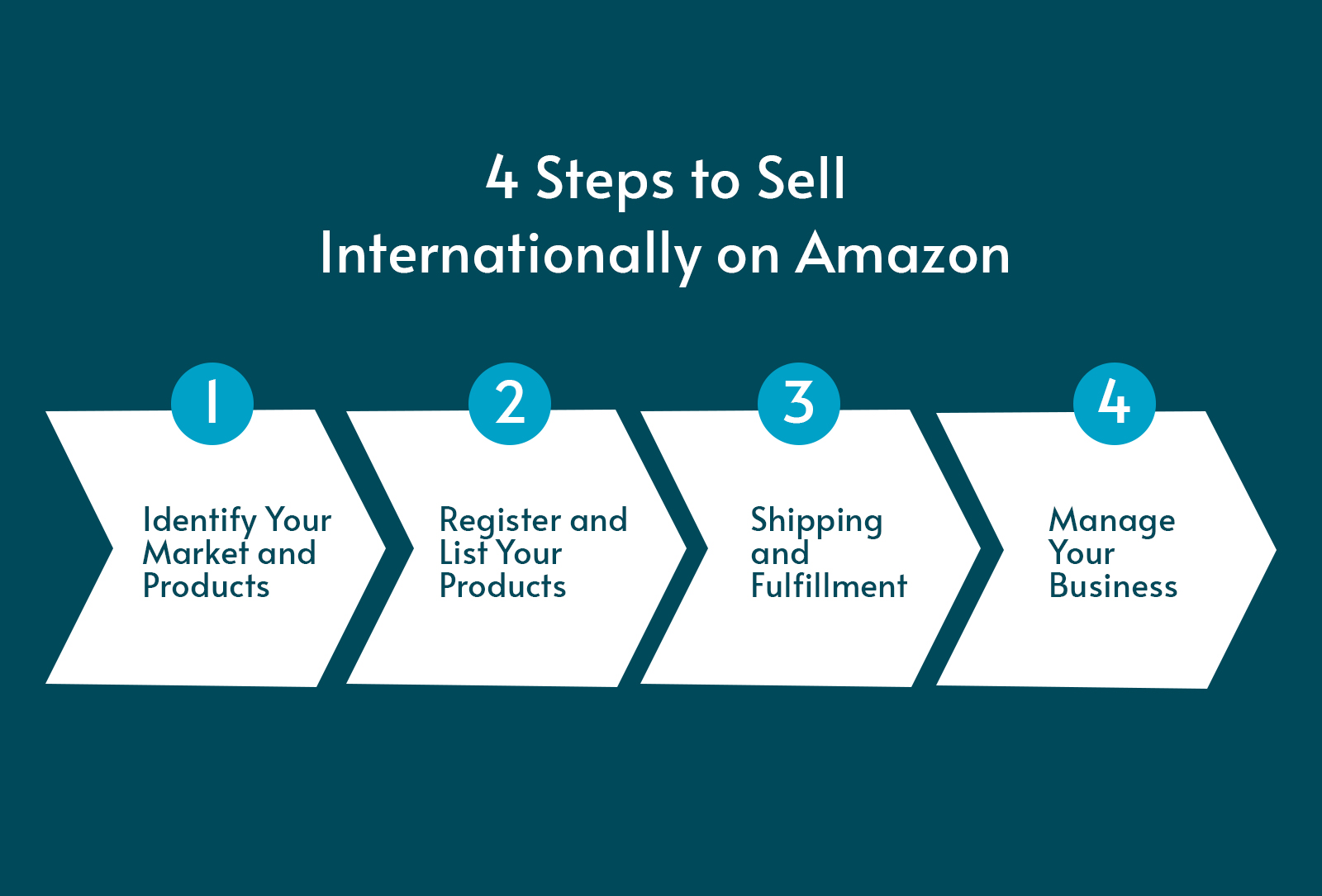
1. Identify Your Market and Products:
Evaluate the potential of selling internationally on Amazon to enhance your business growth. Determine the countries where you can sell your products, and familiarize yourself with the necessary requirements, including taxes, regulations, and strategic considerations for entering new markets.
2. Register and List Your Products:
Utilize Amazon’s tools to manage your seller accounts across different countries and ensure your listings are accurate and appealing. Translate your listings if needed to cater to local languages. Once completed, your products will be available for international customers.
3. Shipping and Fulfillment:
Take advantage of Amazon’s fulfillment services to deliver your products to customers worldwide efficiently. Understand the logistics of shipping and fulfillment in various countries, including costs, delivery times, and specific requirements. Consider using Fulfillment by Amazon (FBA) for international shipping solutions, or manage fulfillment independently.
4. Manage Your Business:
Ensure excellent customer support and handle returns locally, either on your own or through Amazon’s services. Receive payments in your preferred currency. Utilize Amazon’s tools and recommendations to expand your international sales and scale your business globally.
Opportunities of International Expansion on Amazon
1. Access to a Global Customer Base:
Amazon operates in over 50 countries, providing brands with the access to millions of customers worldwide. By listing products on Amazon’s international marketplaces, brands can tap into diverse consumer segments and capitalize on the growing trend of cross-border shopping.
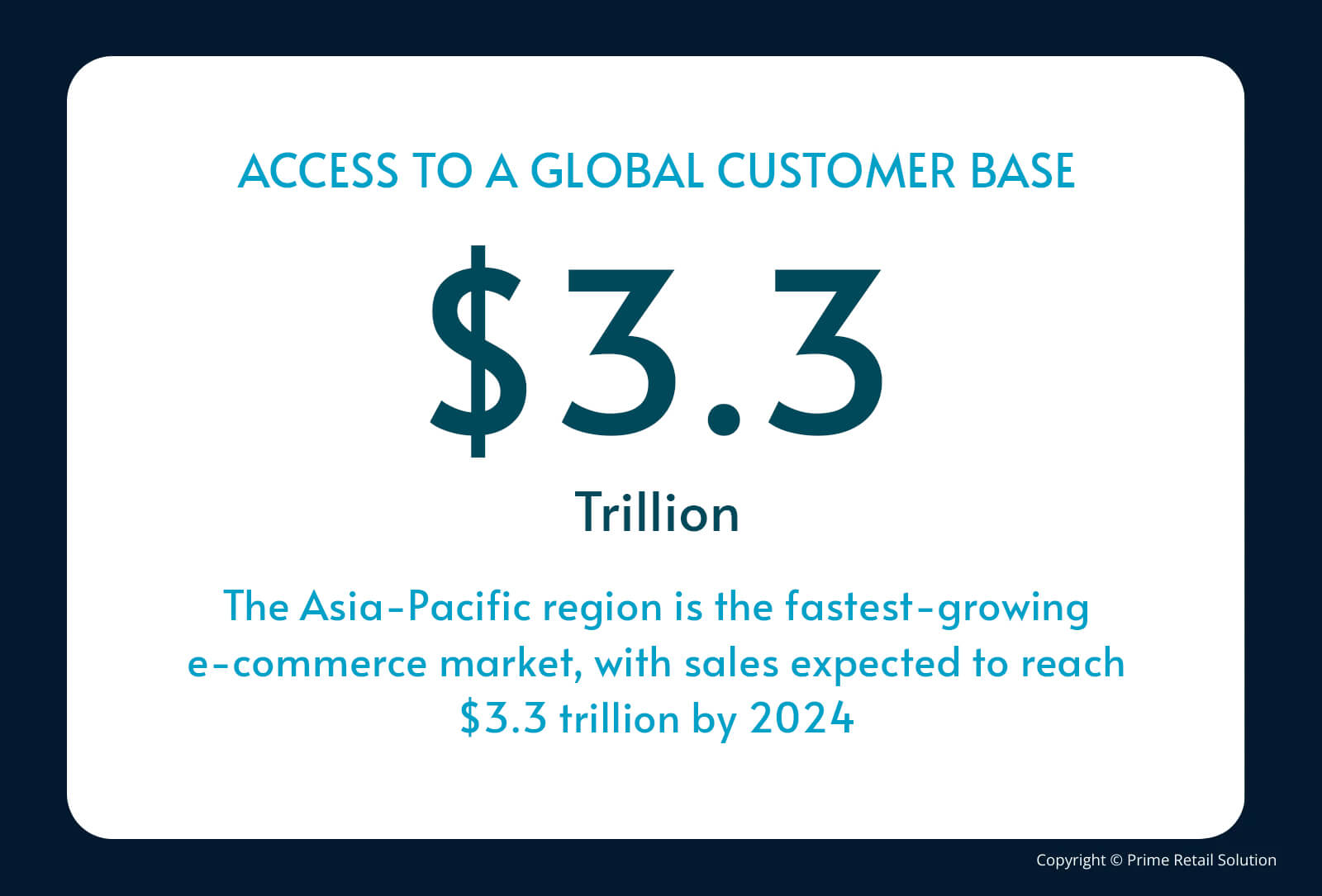
2. Leverage Amazon’s Established Infrastructure:
Amazon’s robust logistics network, including Fulfillment by Amazon (FBA), simplifies the complexities of international shipping and fulfillment. Brands can benefit from Amazon’s warehousing, shipping, and customer service capabilities, ensuring a seamless shopping experience for international customers.There are hundreds of warehouses for Amazon in other countries across the world, with Amazon goods waiting to be shipped.
3. Increased Brand Visibility and Credibility:
Being associated with a trusted and reputable platform like Amazon enhanced the brand’s credibility. Products listed on Amazon’s international marketplaces are more likely to gain customer trust and visibility, leading to higher conversion rates and sales.
4. Diverse Revenue Streams:
International expansion mitigates the risks associated with relying solely on a single market. By diversifying revenue streams across multiple regions, brands can achieve more stable and sustainable growth, even in the face of domestic market fluctuations.
Challenges of Selling Internationally on Amazon
1. Regulatory Compliance:
Each country has its own set of regulations and compliance requirements. Navigating import/export laws, taxes, customs duties, and product certifications can be daunting. Non-compliance can lead to delays, fines, and even product bans.
2. Cultural Differences and Consumer Preferences:
Understanding and adapting to the cultural nuances and consumer preferences of each market is crucial. What works in one country may not resonate with customers in another. Brands need to tailor their marketing strategies, product offerings, and packaging to suit local tastes.
3. Language Barriers:
Communicating effectively with international customers requires overcoming language barriers. Product listings, customer service, and marketing materials need to be translated accurately to avoid misunderstandings and ensure a positive customer experience.
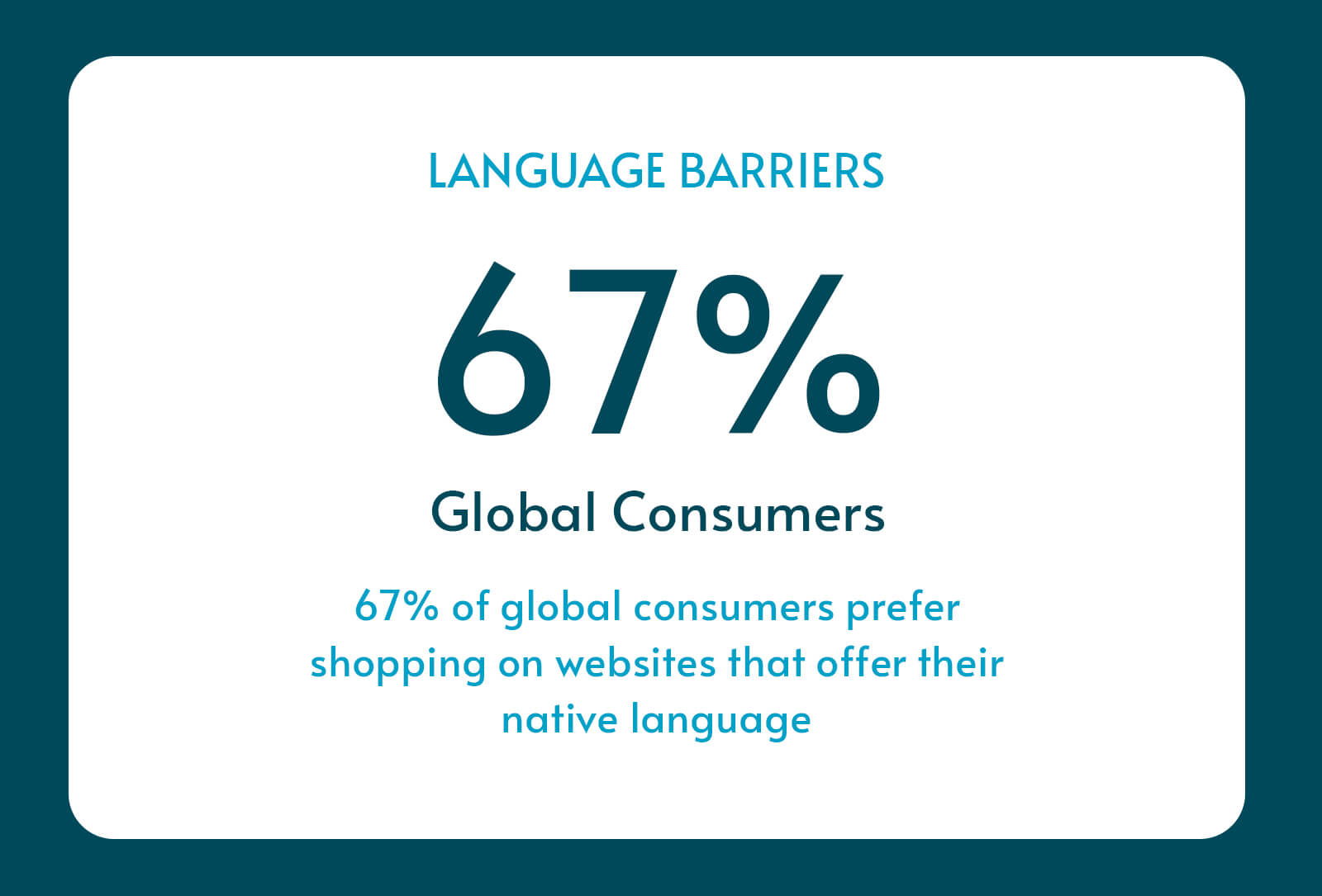
4. Competitive Landscape:
The level of competition can vary significantly from one market to another. Brands need to conduct thorough market research to identify local competitors, pricing strategies, and customer expectations to effectively position their products.
7 Tips for Brands Looking to Expand Globally on Amazon
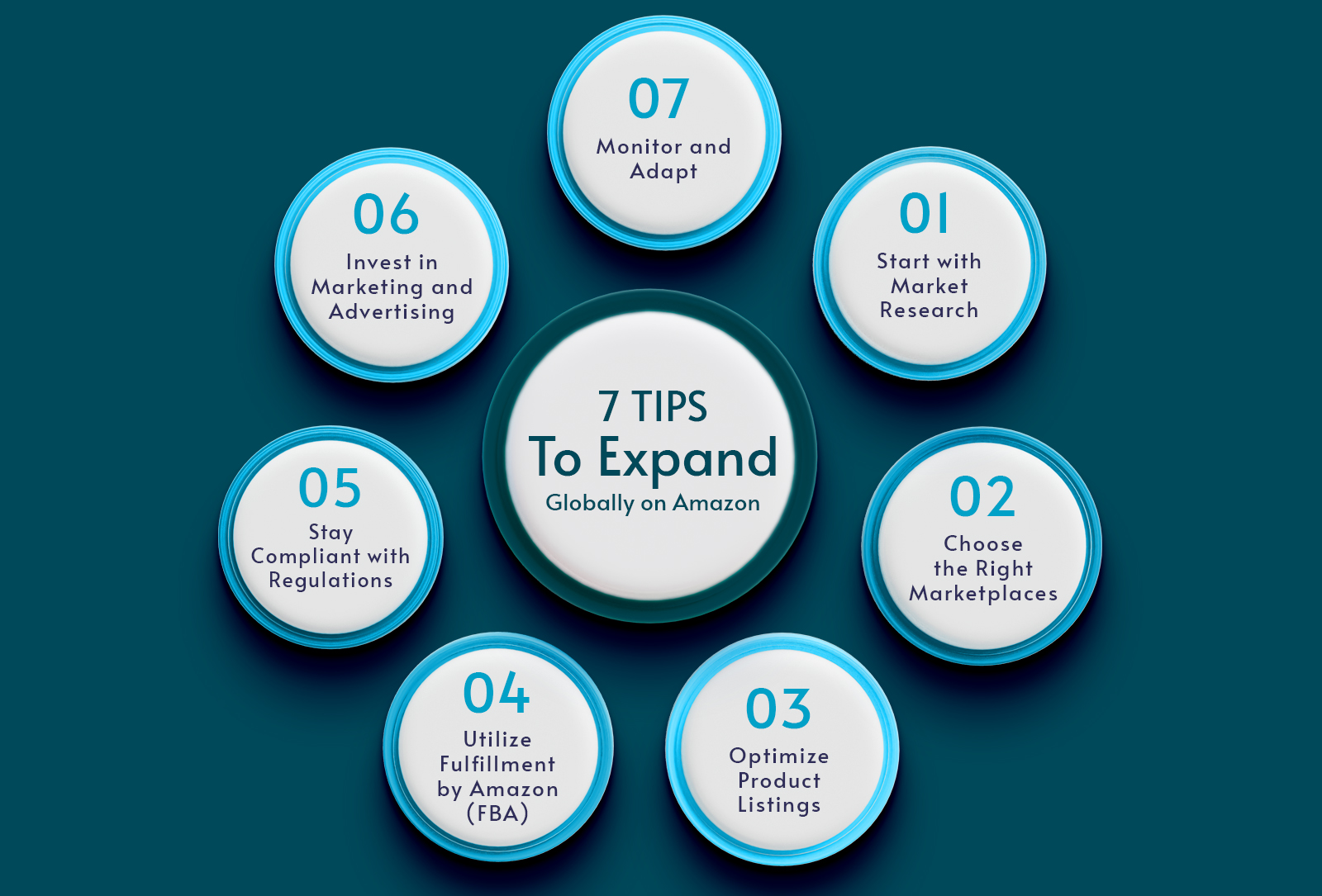
1. Start with Market Research:
Before diving into international markets, conduct comprehensive market research to identify potential opportunities and challenges. Analyze factors such as market size, consumer behavior, competition, and regulatory environment to make informed decisions.
2. Choose the Right Marketplaces:
Amazon operates in various countries, but not all marketplaces may be suitable for your brand. Evaluate the potential of each marketplace based on factors like demand for your products, competition, and ease of entry. Start with one or two key markets before expanding further.
3. Optimize Product Listings:
Invest in creating high-quality, localized product listings. This includes translating product titles, descriptions, and keywords into the local language, using culturally relevant images, and highlighting features that appeal to the local audience. Utilize Amazon’s tools and guidelines to optimize listings for better visibility and conversion.
4. Utilize Fulfillment by Amazon (FBA):
Leverage Amazon’s FBA program to streamline logistics and provide fast, reliable shipping to international customers. FBA also handles customer service and returns, reducing the burden on your team and ensuring a positive customer experience.
5. Stay Compliant with Regulations:
Stay informed about the regulatory requirements of each target market. Partner with local experts or use Amazon’s resources to navigate import/export regulations, taxes, and customs duties. Compliance is key to avoiding legal issues and ensuring smooth operations.
6. Invest in Marketing and Advertising:
To gain traction in new markets, invest in targeted marketing and advertising campaigns. Utilize Amazon’s advertising solutions, such as Sponsored Products and Sponsored Brands, to increase visibility and drive traffic to your listings. Additionally, leverage social media and influencer partnerships to build brand awareness.
7. Monitor and Adapt:
Regularly monitor the performance of your international listings and gather feedback from customers. Use this data to make necessary adjustments to your product offerings, pricing, and marketing strategies. Stay agile and be ready to adapt to changing market conditions and customer preferences.
Conclusion:
Expanding internationally on Amazon offers brands an exciting opportunity to reach new customers and achieve sustainable growth. While there are challenges to overcome, careful planning, research, and execution can pave the way for success. By leveraging Amazon’s infrastructure, optimizing product listings, staying compliant with regulations, and investing in targeted marketing, brands can effectively navigate the complexities of international expansion and tap into their global potential.
Prime Retail Solution is committed to helping brands succeed in the global marketplace. Our expertise in e-commerce strategy, logistics, and marketing ensures that your brand can seamlessly transition into new markets and achieve lasting success. Contact us today to learn more about how we can support your international expansion efforts.
By incorporating these strategies, brands can confidently embark on their journey to international success, leveraging Amazon’s global platform to reach new heights.
Share

